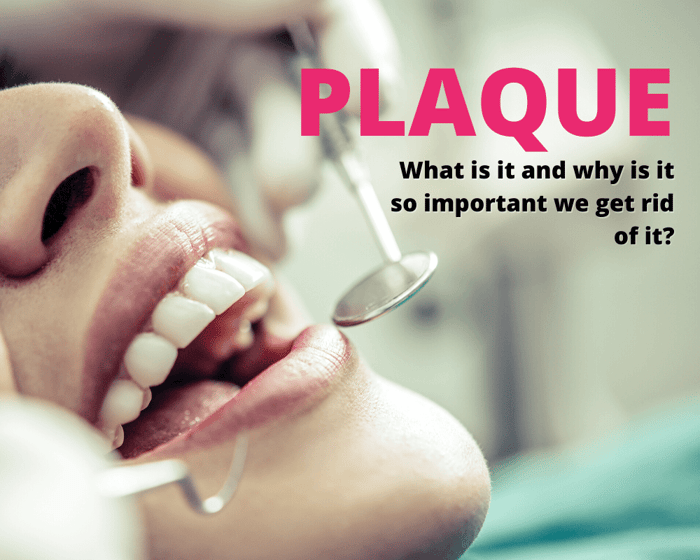What is plaque?
Plaque is a sticky film that covers your teeth and contains harmful bacteria. These bacteria produce different acids after you eat or drink. The bacteria can cause cavities or gum diseases, such as gingivitis. Plaque can contribute to tooth decay and gum disease if not cared for properly. Plaque causes bad breath and red, swollen, or tender gums that bleed more when brushing and flossing.
What causes plaque?
Bacteria mixing with sugary and/or starchy foods and drinks causes plaque to develop. The bacteria release acids that break down the foods and drinks, and if you don’t brush soon, these bacteria, acids, and sugars/starches mix into a sticky film, plaque.
Who is more likely to get plaque?
People that consume too many sugary or starchy foods and drinks, take medications like antidepressants, have a head/neck radiation history, and/or smoke are more likely to develop plaque. However, everyone is actually prone to plaque if they don’t develop a regular brushing routine or do not brush properly. That’s why dentists are more likely to recommend an electric toothbrush, to ensure you are receiving the deepest clean possible while brushing your teeth. Our brand-new Ultrasonic Toothbrush uses 36,800 vibrations per minute to eliminate surface stains and plaque, all while promoting superior gum health and enamel safety.
When should I be concerned?
If you start to encounter swelling in your face, pain and/or difficulty when eating, swollen or bleeding gums, toothache or sensitivity, or chronic bad breath, you should contact your dentist and healthcare provider. These are all side effects of severe plaque development and other oral disturbances.
Where is plaque found?
Plaque forms between the teeth and gum line.

Why is plaque so bad?
If you neglect your brushing routine, plaque buildup can worsen and eventually harden into tartar. Tartar is very difficult to remove and you will need to visit a dentist to have it professionally removed. Tartar can cause an array of issues such as receding gums, discoloration of your tooth, cavities, tooth sensitivity, and in extreme cases, periodontitis, which is a gum infection that can lead to tooth loss or decay. Cavities form from the enamel (white part of tooth that you see) breaking down due to having drinks and foods containing sugar.

How do I prevent plaque from developing?
In order to prevent plaque buildup, the American Dental Association recommends brushing twice a day and flossing daily. Other ways to help prevent plaque from developing on your teeth include chewing sugar-free gum, eating foods low in starches and sugars, bi-annual dental checkups, and using mouthwash. Novashine’s Sweet Melon Mint Mouthwash is formulated with coconut oil, sea salt, and aloe vera, which contribute to cleaning your mouth and ridding it of any bacterial buildup from food.
Do I still need to brush my teeth if I’m whitening them?
Yes! Brushing twice a day helps remove food particles and plaque that can cause tooth decay. Flossing once a day helps clean in between the teeth. Regular dental visits check for hidden oral diseases that may not be visible. Not all white teeth are healthy teeth. Whitening your teeth is only whitening the enamel of each tooth, it is not cleaning your teeth. If you’re hoping to whiten and clean your teeth at the same time, feel free to check out our Whitening Toothpaste, which is made from all natural ingredients and removes plaque while gradually whitening your enamel!


Novashine Teeth Whitening
Making World Famous Oral Care - Everyday
IG: @Novashinesmile
Snapchat: @Novashinesmile
TikTok: @Novashinesmile














